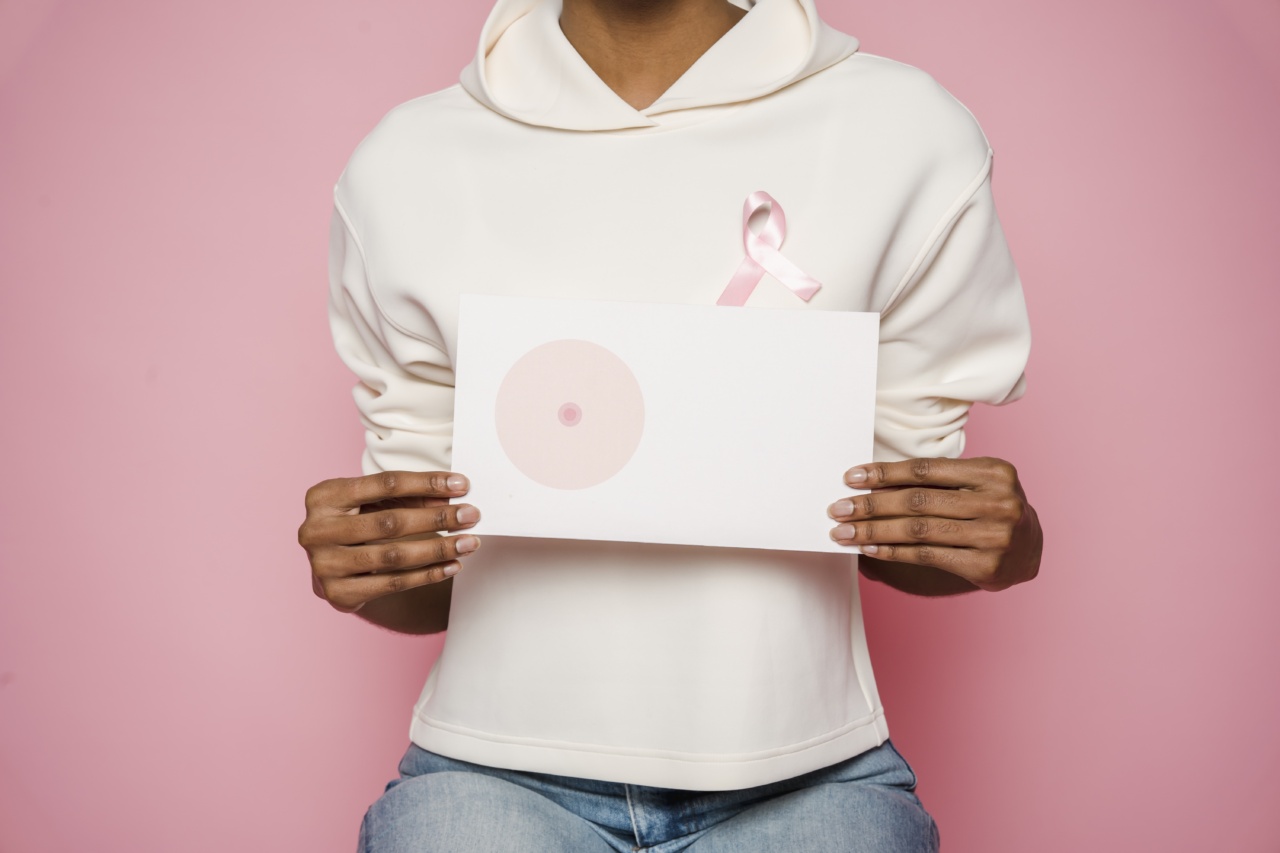Breast cancer is a very concerning issue for every woman around the globe. It is a type of cancer that starts in the breast cells, grows uncontrollably, and eventually spreads throughout the body if treatment is not provided in time.
According to the American Cancer Society, breast cancer is the most common type of cancer among women, and it is the second leading cause of death in women, after lung cancer. The good news is that with early detection and proper treatment, the fatality rate can significantly decrease. In this article, we will discuss some ways to lower the fatality rate for breast cancer patients.
1. Early Detection through Mammography
One of the most significant ways to lower the fatality rate for breast cancer patients is through early detection.
Mammography is a screening test that can detect breast lumps, changes in breast tissue, or abnormal growths before they can be felt by a doctor or a patient. It can also identify microcalcifications that might be a sign of cancer. Experts recommend that women aged 40 and older should get mammograms every one or two years.
However, women with a higher risk of breast cancer might need to start screening earlier and more frequently.
2. Breast Self-Exams
While mammography is a highly effective tool for breast cancer detection, breast self-exams are another helpful method for women to detect any abnormalities or changes in their breasts.
Women should perform self-exams at least once a month and report any changes to their doctor immediately. Self-exams cannot replace mammography, but they can complement it and increase the chance of early detection.
3. Exercise and Healthy Diet
A healthy diet and regular exercise are essential for overall health, and they can significantly reduce the risk of breast and other types of cancers.
Studies have shown that physical activity can lower estrogen levels, improve the immune system, and reduce inflammation, which are all factors contributing to breast cancer development. A balanced diet rich in fruits, vegetables, whole grains, and lean proteins can also reduce the risk of breast cancer. Experts recommend limiting the consumption of processed foods, saturated fats, and alcohol.
4. Breast Cancer Genetic Testing
Some women are at a higher risk of breast cancer due to their genetic makeup. Genetic testing can determine if a woman carries the genes, such as BRCA1 or BRCA2, that increase the risk of breast cancer.
If a woman tests positive for these genes, she can opt for prophylactic measures, such as mastectomy or chemoprevention, that can significantly reduce the risk of breast cancer.
5. Breast Cancer Treatment
If breast cancer is detected, it is essential to seek treatment as soon as possible. Treatment options depend on the type and stage of breast cancer, as well as other factors, such as age and overall health.
Surgery, chemotherapy, radiation therapy, hormonal therapy, and targeted therapy are common treatments for breast cancer. A multidisciplinary team of healthcare professionals, including oncologists, surgeons, and radiologists, can provide the best treatment plan for each patient.
6. Emotional Support
A breast cancer diagnosis can be an emotionally challenging experience for patients and their families. Emotional support from friends, family, and healthcare professionals can significantly improve the quality of life of breast cancer patients.
Support groups, therapy, and counseling can help patients cope with the disease, treatment, and side effects. It is crucial to address the emotional and psychological well-being of breast cancer patients, in addition to physical symptoms.
7. Clinical Trials
Clinical trials offer breast cancer patients the opportunity to access experimental treatments and therapies that are not yet widely available.
Clinical trials can also help healthcare professionals understand the effectiveness and safety of new treatment options. Participating in clinical trials can be a way for breast cancer patients to contribute to the advancement of cancer research, access potentially life-saving treatments, and receive quality care.
8. Ongoing Follow-Up Care
After completing breast cancer treatment, patients require ongoing follow-up care to monitor their health and prevent the recurrence of breast cancer.
Follow-up care includes regular doctor visits, mammography, and other medical tests, depending on the patient’s condition. Healthcare professionals can provide guidance and support for patients’ physical and emotional well-being and help them transition back to their normal life.
9. Breastfeeding
Studies have shown that breastfeeding can reduce the risk of breast cancer, especially in premenopausal women.
Breastfeeding provides health benefits for both mothers and babies and can also help lower the risk of other types of cancers, such as ovarian cancer. Experts recommend exclusive breastfeeding for at least six months and continued breastfeeding, along with solid foods, for at least one year.
10. Lifestyle Changes
Lifestyle choices, such as smoking, obesity, and exposure to environmental toxins, can increase the risk of breast cancer.
Quitting smoking, maintaining a healthy weight, and avoiding exposure to toxins, such as pesticides and chemicals, can significantly reduce the risk of breast cancer. Experts also recommend reducing stress levels, getting enough sleep, and drinking plenty of water to maintain overall health and reduce the risk of cancer.



























